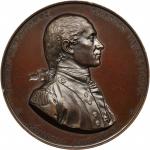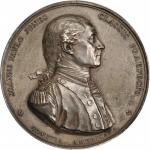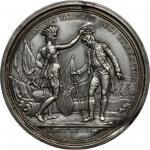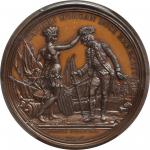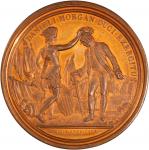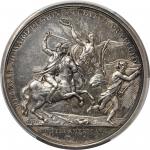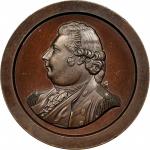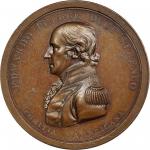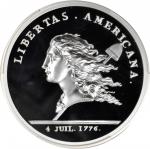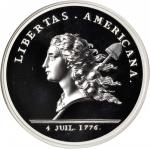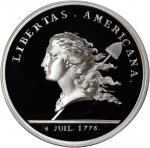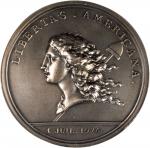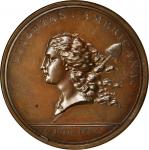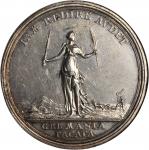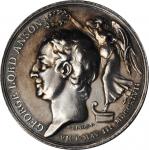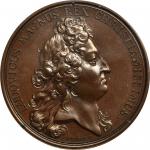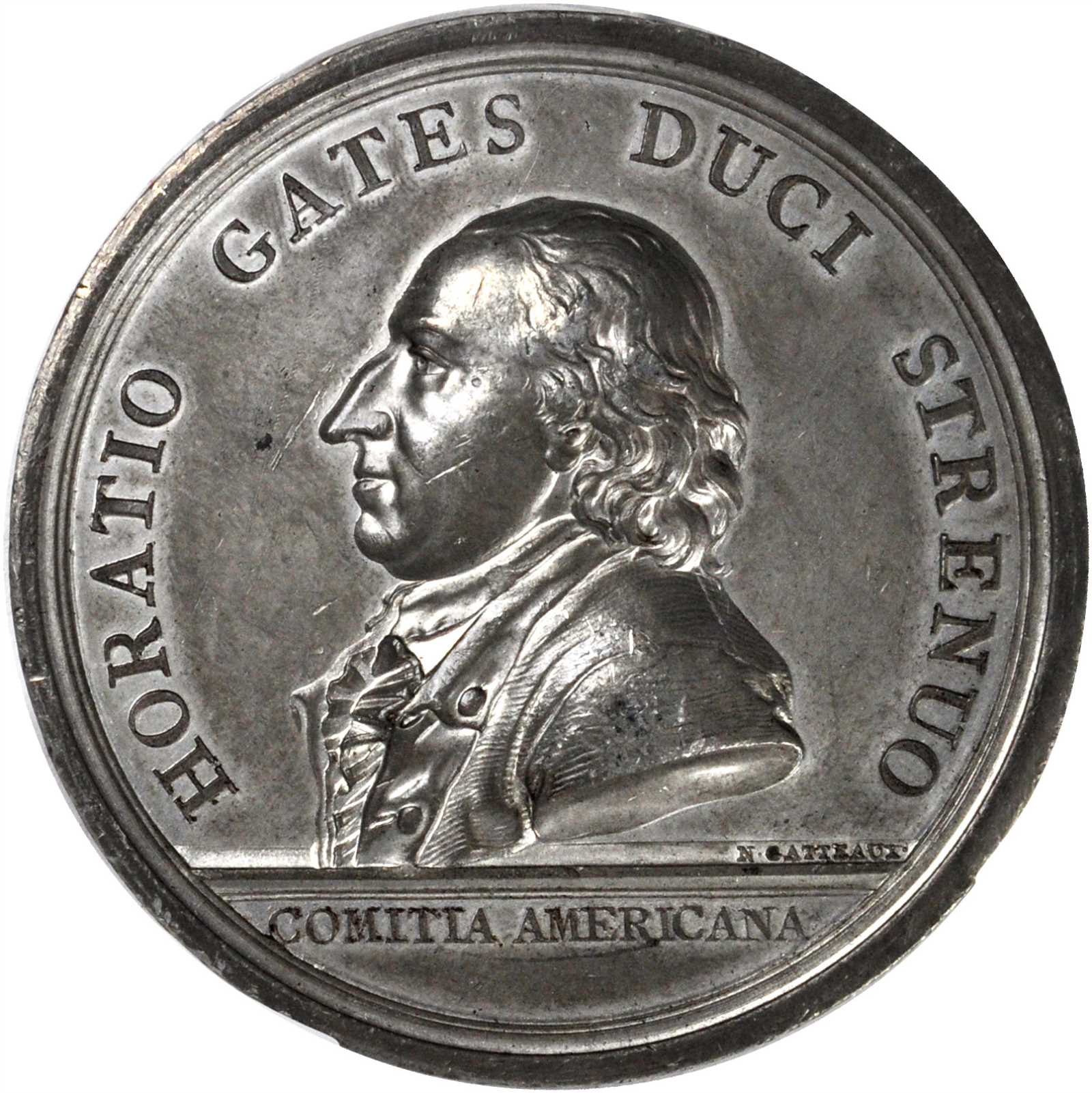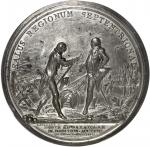1777 (ca. 1801) General Horatio Gates at Saratoga. White Metal. 56 mm. Adams and Bentley-4, Betts-557, Julian MI-2. Specimen-58 (PCGS).This handsome piece has tremendous significance for specialists in early U.S. Mint medals and/or the Comitia Americana series. Lovely pewter gray surfaces retain ample bright satin luster in the protected areas around the central devices and, in particular, the peripheral lettering. Virtually all design elements are boldly to sharply defined. Extremely light rub to the high points of Gates portrait on both obverse and reverse, as well as Burgoynes head and shoulder on the reverse, explains the Specimen-58 grade from PCGS. Handling marks are minimal, the rims on both sides are predominantly smooth and a few wispy marks over the obverse portrait and in the surrounding field are easily forgiven. Minor carbon spots, most of which are confined to the reverse field around the central figures are trivial. This is a premium quality example for both the type and the assigned grade that is sure to fetch a strong price at auction.<p>The surrender of British forces under the command of General John Burgoyne at Saratoga on October 17, 1777, marked a turning point in the American Revolution. Offsetting the colonists defeats at the battles of Brandywine (September 11, 1777) and Germantown (October 4, 1777), the victory at Saratoga bolstered the American cause and brought the French into the war against Great Britain. To mark this important victory, the Continental Congress voted on November 4, 1777, to issue a gold medal to the overall American commander at the battle, General Horatio Gates. Accordingly, Superintendent of Finance Robert Morris instructed David Humphreys, secretary to the American commissioners in Paris, to procure all of the medals and swords that Congress had voted for the American war heroes. Humphreys received this charge in a letter dated June 15, 1784, and he eventually commissioned Nicolas-Marie Gatteaux to engrave the dies for the Gates medal. The Paris Mint produced a single gold medal from these dies, which Thomas Jefferson shipped to the United States from France in 1787 and which was forwarded to Gates later that year by Arthur St. Clair, president of Congress. The Paris Mint also struck 24 bronze and, presumably, a limited number of silver examples at the same time.<p>Sometime thereafter, and in an exact chain of events that has since been lost to history, the dies for the Gates medal found their way to the United States, eventually being delivered to the United States Mint by Vice President Aaron Burr sometime after March 4, 1801 (the day Burr assumed the vice presidency). Per John W. Adams and Anne E. Bentley (<em>Comitia Americana and Related Medals</em>, 2007), Burr likely found the dies in the Treasury or in the archives of the secretary of state. Robert W. Julian (<em>Medals of the United States Mint: The First Century, 1792-1892</em>, 1977) conjectures:<p><em>"In order that the family and friends might have copies of the Gates medal, the dies were brought to the mint by Aaron Burr, who delivered them sometime after March 4, 1801. At that time, Adam Eckfeldt had struck twelve silver and a number of tin medals for the family."</em><p><em></em>Evidence for much of what Julian has written on this subject is confirmed by the 1841 Die Registry of Franklin Peale, although that source makes no mention of silver impressions being made at the Mint. An earlier source attributed to Timothy Alden in 1814 states, "Some years since, a few of [the Gates medals] were executed in tin at the mint in Philadelphia and a select distribution of them was made." Of the four silver specimens known to Adams and Bentley, all are early die state examples that were probably struck in the Paris Mint. As such, the United States Mint does not seem to have struck any Gates medals in that metal. In addition to the tin (white metal) examples, however, the Philadelphia Mint did use the original Gates dies to strike an unknown number of bronze pieces for distribution to collectors, a practice that continued at least until 1885 despite the fact that the dies had deteriorated to such an extent by 1879 that Mint Director Pollock ordered William Barber to prepare a new set.<p>Today, the earliest strikings of the Gates medal are of the utmost rarity and desirability among advanced collectors. The unique gold impression presented to Gates has been part of the collection of the New York Historical Society since 1889. In addition to the aforementioned four silver impressions, Adams and Bentley account for seven white metal pieces; in this metal they give it a Rarity-7 rating. Based on die state, we believe that the present example is one of the first white metal pieces struck in the United States Mint. It is an early Die State 2 medal with a heavy rim break at 7 to 8 oclock, a smaller rim break at 8 to 9 oclock, and only minor die breaks from the rim before 3 oclock to the top of the flag. The final-listed break, in particular, is less advanced over the rim than on the plate example for Die State 2 in the Adams and Bentley reference.From the Cardinal Collection Educational Foundation. Earlier from Presidential Coins and Antiques sale of June 2001, lot 278; Heritages sale of the Marlor Collection, January 2014, lot 3213.


